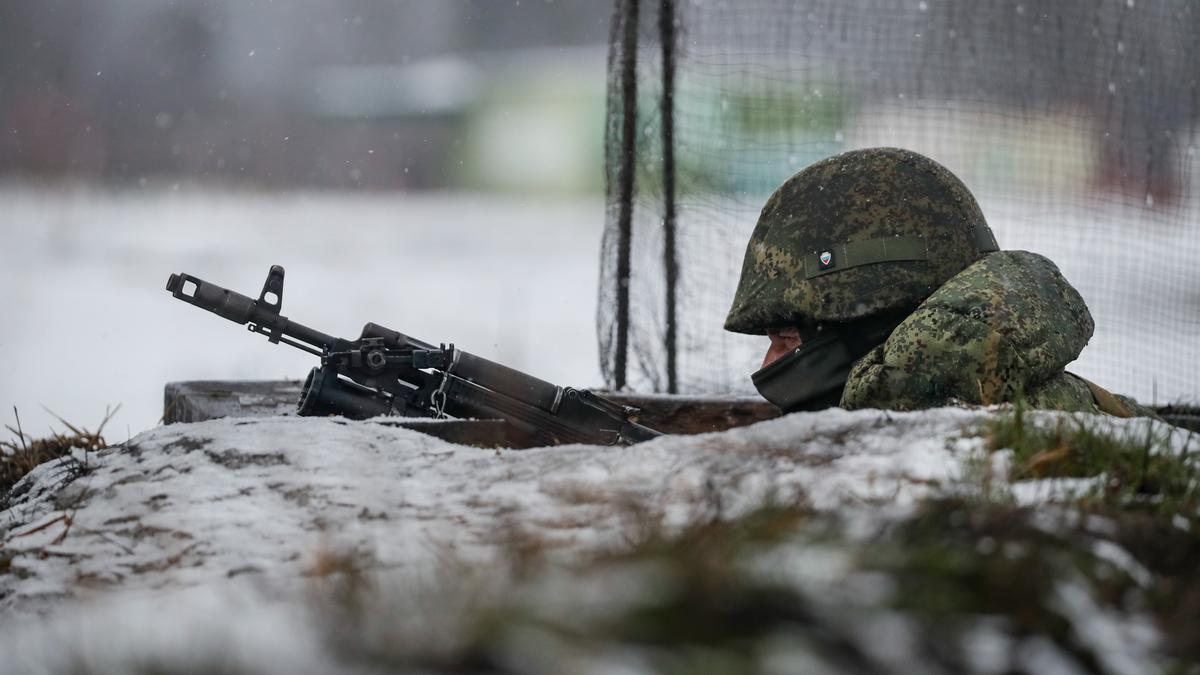During a speech at the CHEY Institute for Advanced Studies in Seoul, NATO Secretary General Jens Stoltenberg said that, according to his data, Russia is preparing a new massive offensive. The Institute for the Study of War, in turn, confirms the data of the head of Ukrainian intelligence: Putin ordered the complete seizure of Donetsk and Luhansk regions by the end of March. Novaya-Europe investigates where and how this can happen.
The Empire strikes back
“No one can tell today when the war will end,” Stoltenberg said. “But what we do know is that this is a war of aggression, this is actually a war of choice by President Putin. He decided to invade another country, a sovereign democratic state in Europe. But the challenge is that we don’t see any signs that President Putin and rules in Moscow are preparing for peace. We see that they are preparing for more war, that they are mobilising more soldiers, more than 200,000, and potentially even more than that. That they are actively acquiring new weapons, more ammunition. We have seen no sign that President Putin has changed his overall goal of this invasion that is to control a neighbour, to control Ukraine. So as long as this is the case, we need to be prepared for long haul.”
The NATO Secretary General also added that Russia is building up its arsenal thanks to the support of other authoritarian states, such as Iran and North Korea.
Many military leaders, officials, and experts from various countries have stated that Russia is preparing a new large-scale offensive. The commander of the Lithuanian Armed Forces, Lieutenant General Valdemaras Rupšys, said in an interview with Guildhall that Russia is in a hurry to carry out another offensive in Ukraine before Western supplies of heavy armoured vehicles get there.
“Now even a blind person can see that they are preparing for the next wave of the offensive,” Rupšys said. “And they may be able to stop or change their plan only if they see that Ukraine has a sufficient amount of equipment, ammunition, weapons and trained personnel.” Rupšys also said that heavy armoured vehicles play an important role in the fighting, and the Russians understand that if they do not carry out the offensive now, it will be too late at the end of spring.
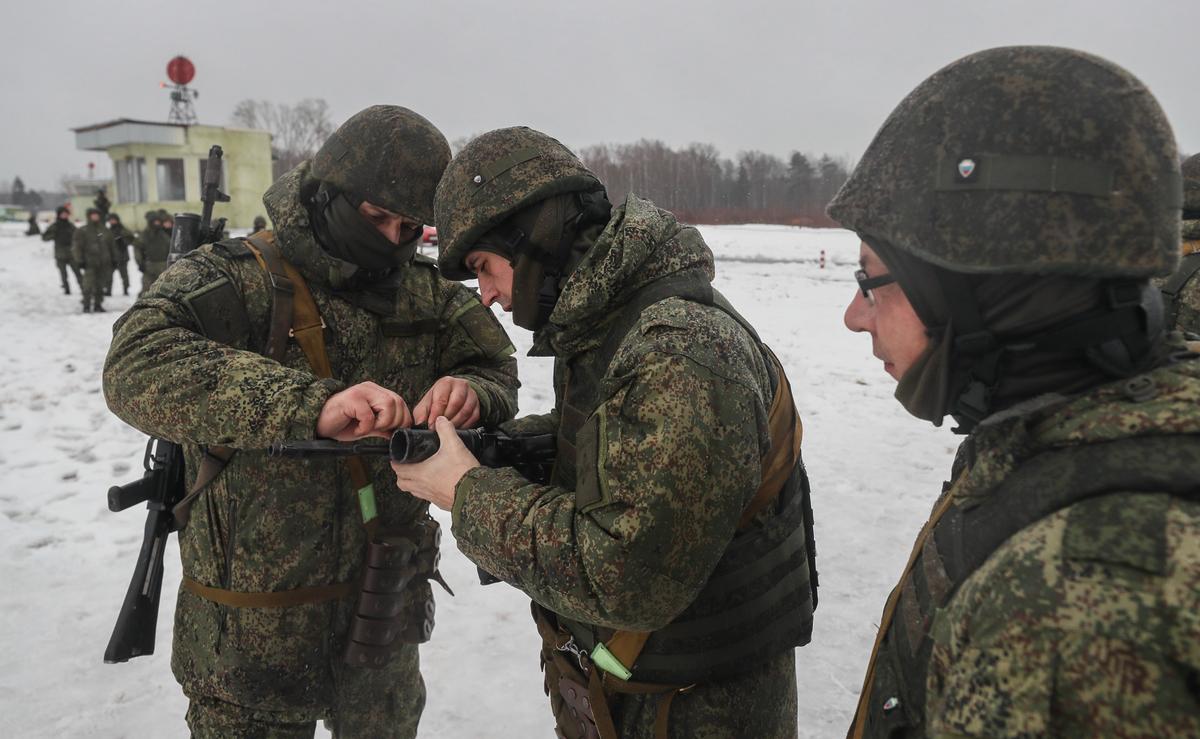
Photo: EPA-EFE / YURI KOCHETKOV
Ukrainian intelligence also expects the start of Russia’s offensive in February–March 2023. According to Kyiv, around this time, the Russian Federation will increase the intensity of fighting in the Donetsk and Luhansk regions. The GUR (Main Intelligence Directorate of Ukraine) has data that Putin instructed the Chief of the General Staff Valery Gerasimov to seize the entire territory of the Donetsk and Luhansk regions by the end of March. Secretary of the NSDC (National Security and Defence Council of Ukraine) Oleksiy Danilov assumed Russia would launch an offensive on the anniversary of the start of full-scale hostilities on 24 February in an attempt to go full circle. According to him, Moscow will soon be forced to go all-in due to the fact that internal problems will not allow the Kremlin to drag out the war.
The head of the Ukrainian Defence Ministry Oleksiy Reznikov predicted a high probability of a new offensive in late winter — early March, due to the fact that training of the mobilised should end by that time.
The head of the military department assumed that by the end of February, the training of the second half of the 300,000 soldiers mobilised by the Russian army in autumn would be completed.
Valery Zaluzhnyi, the Commander-in-Chief of the Ukrainian Armed Forces, warned the President of Ukraine about this at the end of last year.
Volodymyr Zelensky stated that the Russian army could launch an offensive both in the south and in the east of Ukraine. “Russia is preparing for a new wave of aggression — with the forces that it is able to mobilise,” the head of state said. “Now the invaders are already increasing pressure on the Bakhmut, Vuhledar and other directions, and they want to increase the pressure on a larger scale. In order not to recognise the fallacy of the aggression, the owners of Russia want to throw more of their people and equipment into combat.”
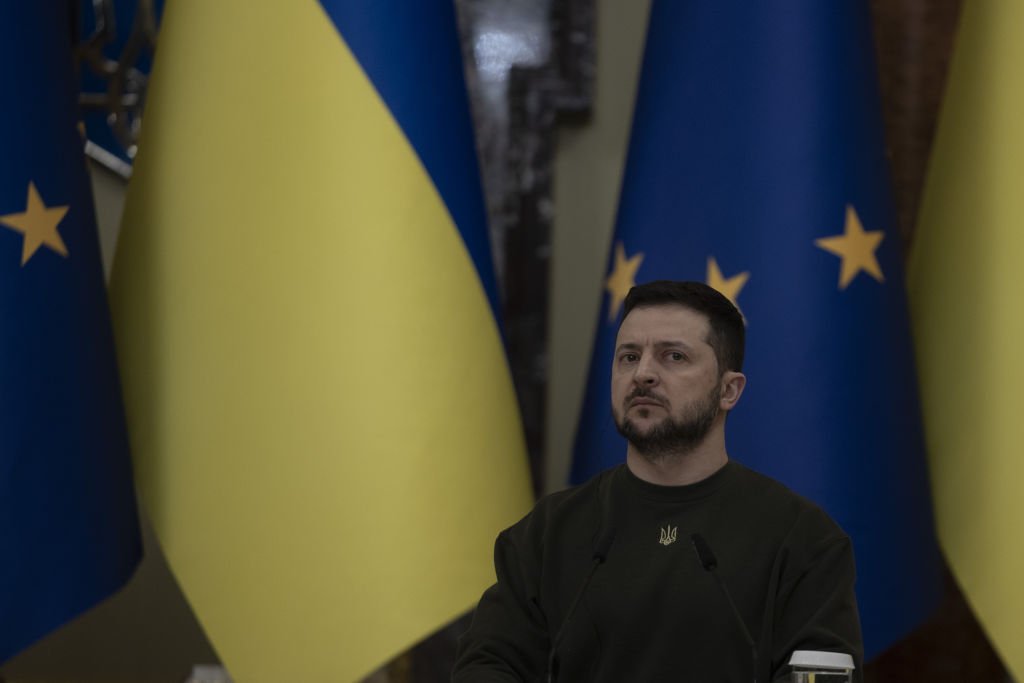
Photo: Mustafa Ciftci / Anadolu Agency / Getty Images
“Now everyone is waiting for the Russian offensive, and the whole question is what form it will take,” Israeli military expert David Handelman expresses his opinion to Novaya Europe. “It is clear that large-scale offensives from the north or from the south in order to encircle the AFU grouping in Donbas or attack Kyiv are more tempting. However, it is far from certain that the Russian Armed Forces in their current state are physically capable of such operations at all. Therefore, the opinion may prevail in the Russian general staff that it is better not to get involved in such adventures, but to continue what brings at least some success, namely slow gnawing in Donbas. Perhaps after a while, we will see the answer to this question.”
“Summing up the position of military experts, it can be argued that a large-scale offensive today or in the near future is not the best idea for the Russian Federation. It would be more effective to hold the defence of the land corridor to Crimea and other controlled territories without trying to expand them,” explains political analyst Stanislav Belkovsky to Novaya-Europe. “Nevertheless, from a political and psychological point of view, such an offensive, in my opinion, is almost inevitable.
Putin needs to show the Russians some successes and nourish the inner sense of the winner. And the military leadership of Russia needs this to demonstrate to the president its own effectiveness, usefulness, and significance.
Therefore, they will attack regardless of whether it is advantageous or not. We can assume that this will happen in March or April.”
According to Stanislav Belkovsky, the goal of the offensive will be to expand control over the formally annexed territories and regions that Russia has already declared its own. The second task will be an attempt to move the front line away from Crimea and Donbas — since one of the tasks of the special operation is still declared as the safety of residents of the Donetsk and Luhansk “people’s republics”, a considerable part of which was destroyed during measures to “protect” them.
“In my opinion, one of the likely targets of the offensive will be Zaporizhzhia, the possession of which would give the maximum benefit to the Russian side by creating a strategically important outpost on the Dnipro River. From there, Russia could threaten Ukraine in different directions. Another possible vector of the offensive is from the territory of Belarus to Volyn. It is necessary in order to divert significant parts of the Armed Forces of Ukraine to the north, as well as to try to disrupt the logistics of Western arms supplies.”
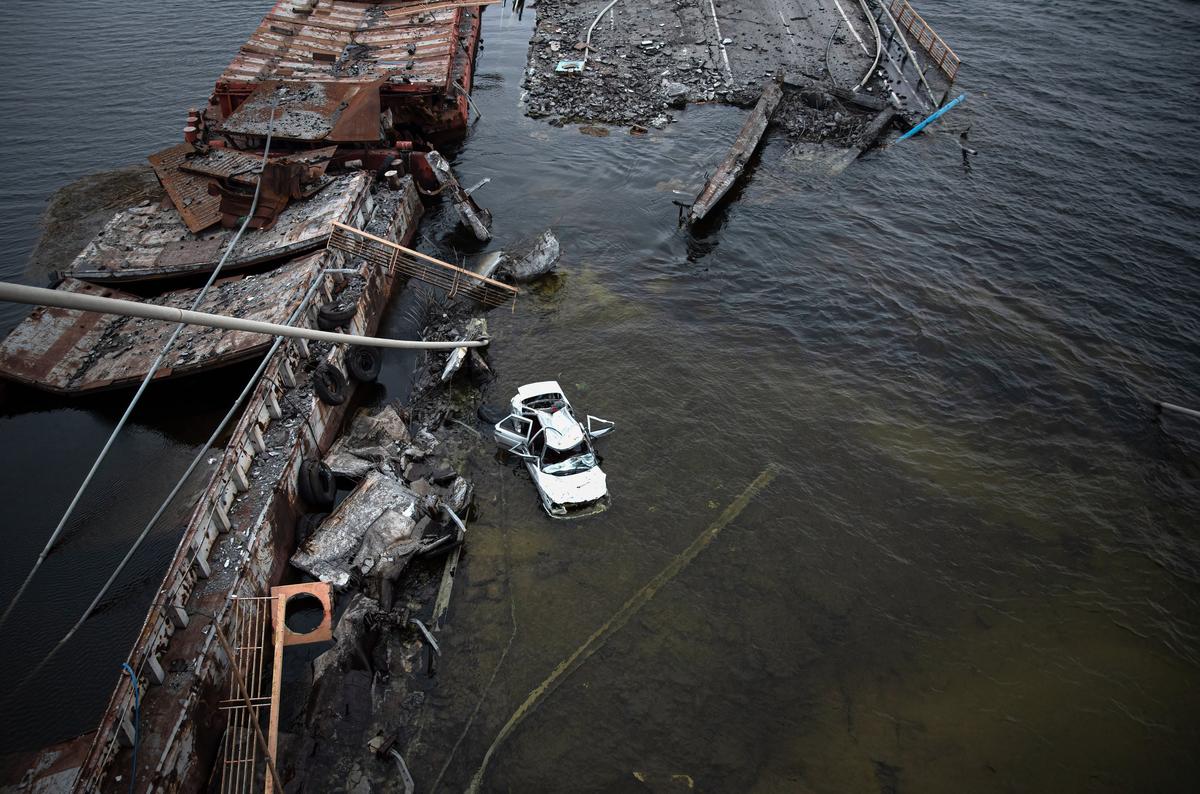
The blown-up bridge over the Dnipro. Photo: Ximena Borrazas / SOPA Images / LightRocket / Getty Images
Some experts agree with Belkovsky that Russia’s offensive will take place, but they suggest other directions of the main strike are more likely. “By 23 February, we expect the Russians to continue offensive operations in the prepared sectors of the front, where, for example, the necessary infrastructure has already been built and there are defence lines for withdrawal,” Ukrainian military expert Roman Svitan told Novaya Europe. “Mostly, these will be brute power attacks. After all, the Russian army is not currently supplied with a significant amount of equipment. If we proceed from the basics of military science, it will be most advantageous for Russia to attack from the Donetsk ridge, between the cities of Vuhledar and Soledar (recently seized by Russian troops. — editor’s note). Over the past two or three weeks, we have already seen attempts to attack here. I am sure that with the arrival of newly trained units of the Russian army from among the mobilised to the contact line, we will see an increase in the intensity of such pressure.
Today, more than 100 thousand people are being trained at the training grounds of Belarus and Russia. It is they who will arrive at the front and join the troops involved.
I consider Kupyansk and Svatove to be another possible direction of attack from the village of Valuyki, where a large base and logistics hub of Russian divisions are located. The task of this grouping will be to squeeze out the AFU from the occupied territory up to the city of Lyman and attempt to take it in a pincer. On the other hand, the Russian forces will start from the city of Kreminna.”
According to Roman Svitan, by 23 February, which in Russia is the Defender of Fatherland Day, the Russian army will try to capture several settlements: Vuhledar, Avdiivka, Maryinka, or Bakhmut. Sacrificing tens of thousands of lives of their military in the process.
A gift to the leader
This is necessary to make a gift to the commander-in-chief. The pressure on these areas will at least double due to the accumulated reserves of manpower, equipment, and ammunition. At the same time, our interlocutor claims that the Russian army is fighting with a special focus on dates and localities, and not on weather conditions and landscape features. So the Russians, according to Svitan, were able to seize the city of Soledar only by pelting it with the bodies of their soldiers. This was done in order to present the leadership with at least some kind of victory.
Svitan calls the defence line created by Ukraine almost perfect. In almost all directions, the fortifications created rely on water barriers or networks of belt roads that provide the possibility of transporting the necessary ammunition. Near Donetsk, the Russian army has not been able to storm the defence line near the village of Pisky, the cities of Avdiivka and Maryinka for more than eight years.
“In the area of Zaporizhzhia, Russia plans to deliver disturbing strikes that bind our troops and prevent them from being transferred to other sectors of the front,” says the Ukrainian military expert. “The Russian army can make similar manoeuvres from Belarus. I am sure that the Belarusian leadership will agree to nothing more than conducting a border conflict. After all, in the event of a violent escalation, we will be able to destroy airfields and many objects of economic and military infrastructure in almost half of the country with our long-range weapons.”
According to Svitan, in case of operational and technical necessity at the front, Kyiv may decide to abandon Bakhmut. After that, the Ukrainian troops will withdraw to the elevation separating this city from several neighbouring settlements: Chasiv Yar, Kramatorsk, Druzhkivka, Kostyantynivka, and Slovyansk. An additional line of defence has already been prepared on the ridge dominating Bakhmut and stretching west to east for tens of kilometres. This fortified area will reliably hold the Russian troops advancing from below. Similar tactics have already been used after the Russian army captured the city of Soledar. “Our gunners shoot Russians from their positions, as in a shooting gallery,” he explains. “The Russians will definitely not be able to pass this ridge. But today there are no prerequisites for the abandonment of Bakhmut.”
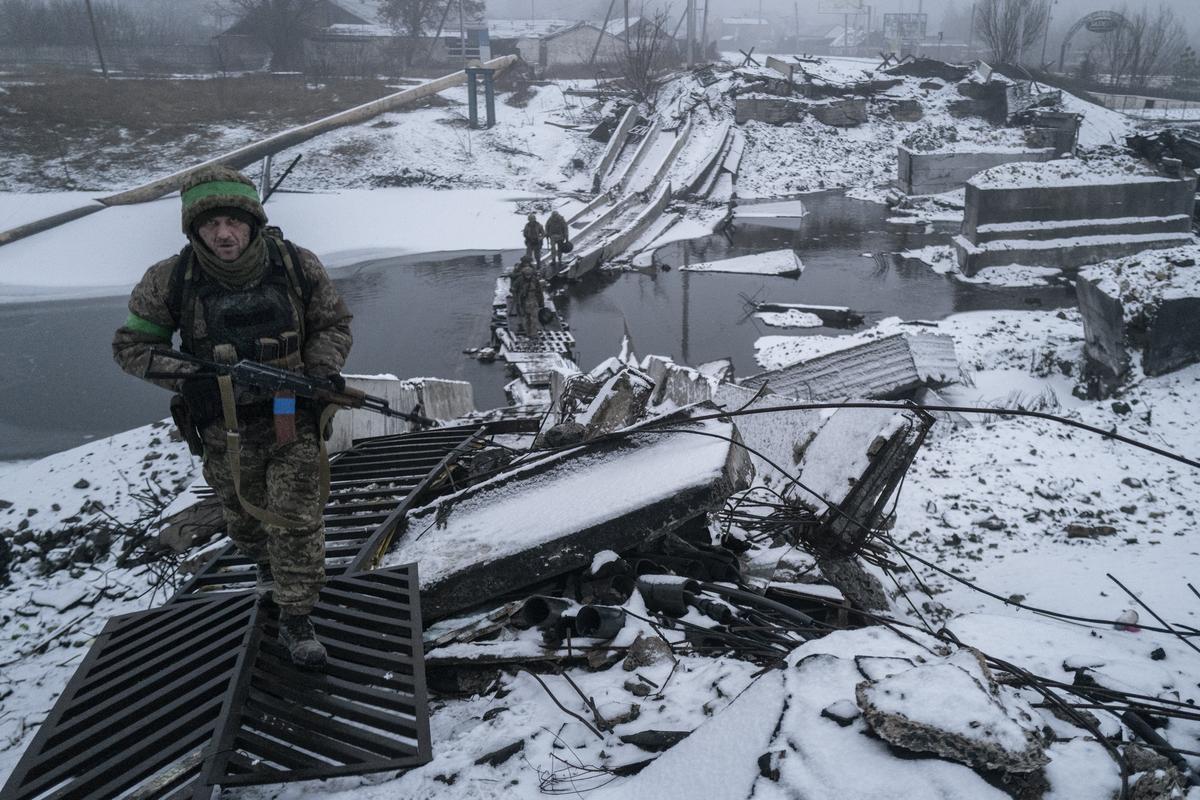
Ukrainian soldiers return from the front line in Bakhmut, 29 January 2023. Photo: Marek M. Berezowski / Anadolu Agency / Getty Images
According to the Ukrainian expert, the Kremlin can also produce a distracting blow from Zaporizhzhia. Roman Svitan suggests that assault detachments of the Wagner Group and other Russian PMCs, as well as units consisting of the mobilised, have been transferred to the Zaporizhzhia direction. At the same time, Svitan is confident that a serious offensive is not expected here due to the considerable distance for the supply of ammunition. After all, it is extremely difficult to deliver the necessary resources to a distance of about 300 km under the shelling of heavy long-range artillery.
A source of Novaya-Europe at the headquarters of the Russian group in Ukraine confirms the preparations for the offensive. According to them, the generals are ready to “mince” tens of thousands of military personnel to please the whim of the high command. At the same time, practically no obvious dangers of such a manoeuvre are taken into account. “Ukrainians receive absolutely accurate data on all our movements from Western intelligence agencies,” the source says.
“It is impossible to accumulate enough forces in a certain area without exposing them to the blows of HIMARS and long-range artillery.”
According to the source, the problem lies in the difficulties of capturing territories and cities and in their further retention. After all, during the offensive, the front line inevitably stretched, and difficulties with the delivery of ammunition and even food arise. “As a result of the attacks, instead of settlements, we get a lunar landscape with the remnants of the population that hates us,” says the Russian military. “Sabotage and reconnaissance groups of the enemy operate in the occupied territories. They stab us in the back, direct artillery, mine roads, and seize POWs. In such an environment, it is possible to hold the front only at the cost of huge losses.”
First Crimea, then Donbas
Roman Svitan is confident that after the Russian offensive is thwarted, the Ukrainian units will launch a successful counter-offensive. Kyiv should have enough strength for this manoeuvre. After all, at the beginning of the year, the Western allies began to provide very serious and expensive assistance to Ukraine. When heavy equipment — tanks, infantry fighting vehicles, artillery, and multiple launch rocket systems — enters Ukraine under the lend-lease program, Kyiv will be able to launch an attack towards the coast of the Sea of Azov. This will make it possible to bring down two Russian fronts at once — Zaporizhzhia and Kherson. If this happens, the Russian army will have to retreat to Crimea, in an attempt to gain a foothold on the isthmus leading to the peninsula. But by this time, Kyiv should already have at its disposal high-precision missiles based on GBU-39 glide bombs, which can be launched both from aircraft and from M270 MLRS and M142 HIMARS launchers. These missiles hit targets at a distance of 150 km, which will allow destroying the enemy throughout northern Crimea. Roman Svitan predicts these events during the spring of this year.
“If there are enough forces and supplies, we will cut off the Donetsk and Luhansk fronts from the Russian border from Taganrog and Krasnodon [Sorokyne],” Roman Svitan concludes. “Then it will be possible to calmly engage in the de-occupation of Donbas from the east of Luhansk. It may take all the time until the end of the year. But this is possible only if the current dynamics of lend-lease supplies are maintained.”
Crimea as a reason for a nuclear strike
How will the Kremlin react to such a turn of events? Stanislav Belkovsky believes that it may well come to a nuclear strike. The main task of the special operation today is stated as saving Russia from large-scale aggression by the United States and NATO, the political scientist points out. In this sense, any result in which the Russian Federation does not disappear from the world map will be declared victorious. At the same time, Putin will try to bring the United States to the negotiating table. After all, he is absolutely convinced that it is the United States that decides everything in the current conflict, and Ukraine cannot be considered a subject for dialogue. Putin will be quite satisfied with a situation in which America stops the war, which is tiresome for the country and its allies, and recognises Russia’s de facto control over the four annexed Ukrainian regions. Apparently, the Russian president is convinced that without a spring offensive, he will not be able to make his Western partner listen to him.
“It is clear that the decision on the use of tactical nuclear weapons can only be made by Putin personally,” Stanislav Belkovsky says. “He uses Valery Gerasimov (in military circles, he is believed to be a supporter of the use of a low-power atomic bomb. — editor’s note) as an element of blackmail. The West is really afraid of such a development of events and has high hopes for China, which allegedly does not allow Russia to use tactical nuclear weapons. At the same time, the Chinese and Turkish leaders are putting a price on themselves, claiming that they are keeping Putin from this step. It is also beneficial for the Russian president because, by such actions, Xi Jinping and Erdoğan confirm the seriousness of his intentions. I am sure that the red line for the cornered Putin may be the threat of losing Crimea. In my opinion, he internally resigned himself to this prospect. If there is a danger that the Ukrainian flag flies over Simferopol, Putin may well use nuclear weapons.”
Join us in rebuilding Novaya Gazeta Europe
The Russian government has banned independent media. We were forced to leave our country in order to keep doing our job, telling our readers about what is going on Russia, Ukraine and Europe.
We will continue fighting against warfare and dictatorship. We believe that freedom of speech is the most efficient antidote against tyranny. Support us financially to help us fight for peace and freedom.
By clicking the Support button, you agree to the processing of your personal data.
To cancel a regular donation, please write to [email protected]
